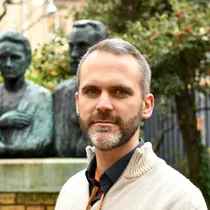- Accueil >
- Publications >
- Evolution of synchronous female bilateral breast cancers and response to treatment
Evolution of synchronous female bilateral breast cancers and response to treatment
Auteurs
Anne-Sophie Hamy, Judith Abécassis, Keltouma Driouch, Lauren Darrigues, Mathias Vandenbogaert, Cecile Laurent, Francois Zaccarini, Benjamin Sadacca, Myriam Delomenie, Enora Laas, Odette Mariani, Thanh Lam, Beatriz Grandal, Marick Laé, Ivan Bieche, Sophie Vacher, Jean-Yves Pierga, Etienne Brain, Celine Vallot, Judicael Hotton, Wilfrid Richer, Dario Rocha, Zakia Tariq, Veronique Becette, Didier Meseure, Laetitia Lesage, Anne Vincent-Salomon, Natalie Filmann, Jenny Furlanetto, Sibylle Loibl, Elise Dumas, Joshua J. Waterfall, Fabien Reyal
Résumé
Abstract
Synchronous bilateral breast cancer (sBBC) occurs after both breasts have been affected by the same germline genetics and environmental exposures. Little evidence exists regarding immune infiltration and response to treatment in sBBCs. Here we show that the impact of the subtype of breast cancer on levels of tumor infiltrating lymphocytes (TILs,
Equipes

Membres

CELINE VALLOT
Directeur de recherche CNRS
WILFRID RICHER
Ingénieur de recherche


